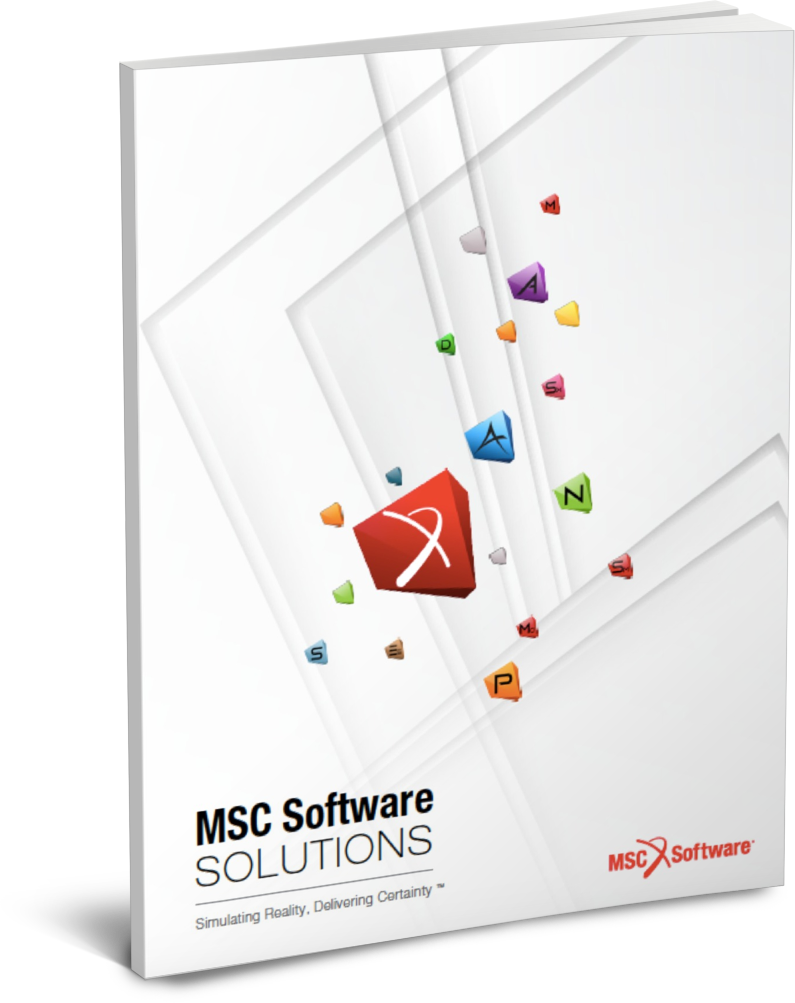Scripting with MSC Apex
In an ideal world every piece of software has a button that does exactly what you want, but in the real world you will find yourself completing repetitive tasks either within a single model or each time to create a model.
Repetitive tasks waste the time of engineers and can lead to errors through lack of attention. MSC Apex has adopted the Python scripting language with its own extensions in order to make automation of tasks a fairly straightforward thing.
Topics: Various - CAD CAM FEA PLM, TechTips, Hexagon MSC Software
Non-uniform Thickness with MSC Apex
Capturing data
If you work with moulded or die cast parts you’ll be familiar with thin shell parts that have tapering thickness due to draft angles. Capturing this effect in your finite element mesh can be tricky and lead to approximations that might not be comfortable or conservative. MSC Apex has an auto-assignment feature that will accurately capture and represent the non-uniform shell thickness with remarkably little effort.
Topics: Various - CAD CAM FEA PLM, TechTips, Hexagon MSC Software
Geometry Manipulation with Apex
Ease of Use
The guiding principle for the development of MSC Apex has been ease of use. Through the intelligent design of an intuitive interface users need no formal training and can be productive after watching a few short videos. All the features of the product have both written and video instructions making it easy to learn as well as use.
Topics: TechTips, Hexagon MSC Software
Defeaturing with MSC Apex
Prepping Computer-Aided Design (CAD) geometry for Finite Element Analysis (FEA) can be a complex, time-consuming and error-prone activity.
MSC Apex has been designed from the ground-up to make this a simple and intuitive step that can dramatically reduce the time spent in this part of the process, freeing highly qualified engineers to do more analysis and design improvement.
Topics: Various - CAD CAM FEA PLM, Finite Element Analysis (FEA), Hexagon MSC Software
Birdstrike Simulation
A recent emergency landing by an Air France A380 aircraft inspired me to this blog article. Birdstrike is a standard consideration for any air vehicle but not an easy thing to model accurately with regular FEA software. The events are typically short duration, involve the failure of materials and a loading complicated by secondary impacts as the bird fragments.
Topics: Hexagon MSC Software
Zoom Modelling with MSC Marc
One of the parameters driving the age-old question of “is my mesh refined enough?” is the impact it has on the model size and the knock-on effect to runtime and computer spec. This comes into starkest relief if you have a dimensionally very large structure but where you need a fine local mesh around some detailed areas in order to refine stress intensity for e.g. fatigue life prediction.
Meshing Irregular Parts in Hex Elements
Almost all the solid element meshes I come across in the last decade or so have used second-order 10 noded tetrahedral elements, and for most applications, they are perfectly fine. There are however some applications in some FEA solvers that require a hex8 element – for example some elastomer models, magneto and electrostatic solvers, and some acoustic solutions. How do you mesh an irregular part in hex elements?
Composite Zoning Optimisation
It is for good reasons that designing laminated composite structures is sometimes known as a ‘black art’. It is not easy to intuit from the topology of and loads applied to a component what a good ply layup should be. Many companies rely on the wisdom of veteran engineers’ hard-won experience, but sometimes it is necessary to take a step back and ask “what else could we try?”.
Often the design of a composite layup starts with the definition of zones within a part. The layup on each of these zones can then be fettled using FEA to arrive at a stacking sequence which can then be used to define plies.
But how do you choose the zones? Is it arbitrary based on the topology of the part? Do you just chequer-board your panel into regular squares? You could use a technique developed with MSC Nastran for one of the F1 companies.
Topics: Various - CAD CAM FEA PLM, Finite Element Analysis (FEA), Hexagon MSC Software
Fracture Mechanics
Modelling Cracks the Easy Way
In my previous blog I talked about the advantages of automatic re-meshing in the analysis of rubbers in improving accuracy and stability of a simulation. One advanced application of this capability that was not touched upon was in the field of crack propagation.
In many industries it is sufficient to use your analysis to predict that a crack could initiate and redesign the part to avoid this occurrence. In others though it is possible that a crack may be identified from an in-service inspection whereupon it becomes necessary to understand if it will propagate under the loads applied and how quickly so that a replacement can be introduced in a timely manner.
Predicting crack growth in materials with finite elements can seem more art than science.
As an example, in some codes you may need to construct a very precise ‘rosette’ mesh at the crack tip.
A series of angular perturbations to the crack tip node are then simulated to look at the energy release resulting from extending the tip with the assumption being it moves in the direction of the greatest energy release.
.png?width=139&height=70&name=DTE-Logo%20(4).png)









